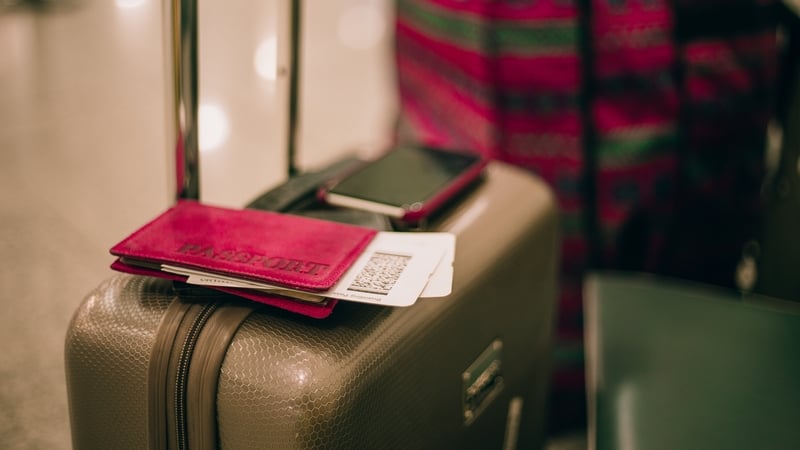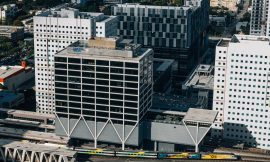If you ever look through an airline’s annual results, you’ll likely see two different categories of revenue – often ‘ancillary’ and ‘scheduled’.
Scheduled revenue is the term an airline might use to describe the money customers spend on their actual ticket. It will cover any part of their service that comes with the ticket – but nowadays that usually isn’t much.
Next to that is ‘ancillary revenue’, the catchy term airlines use to describe the money they make from everything other than the actual plane ticket.
And it’s a relatively new thing in aviation – or, at least, its importance is.
Because, 30 years ago, airlines weren’t making much money outside of ticket sales.
Back then passengers paid for their plane ticket, and that included most of the things they needed. They got their seat – and it was assigned by default – you got your luggage (carry on and check in) and you quite possibly got a meal too.
There were some ancillary revenues back then – like in-flight duty free sales – but all in all it represented a pretty small part of an airline’s bottom line.
So when did that start to change?
We need your consent to load this rte-player contentWe use rte-player to manage extra content that can set cookies on your device and collect data about your activity. Please review their details and accept them to load the content.Manage Preferences
Really it’s from the mid-90s when we start to see this shift. In Ireland – and eventually Europe – it’s when Ryanair adopts a no-frills, low-cost model. The likes of EasyJet also came to market in Britain around this time, with their own version of the same business model.
But, even then, the growth of the add-on is somewhat of a slow burner. Because, initially at least, the focus, was on cutting back on the cost of aviation, as opposed to finding new ways of generating money.
The no-frills model that Ryanair took from Southwest Airlines was all about lowering staffing levels and costs, cutting maintenance costs, squeezing efficiencies out of the schedule and trying to fill planes as much as possible.
And when you look back at some of the reporting around Ryanair in the mid-to-late 90s, you can see just how far away the industry was from the model they’re known for today.
For example, a piece in The Irish Times in 1997 looked at Ryanair’s prospects as an investment, ahead of its stock market flotation. It pointed out that the planned end of duty free shopping within the EU was a threat to its business model – because at the time it was offering cabin crew a commission for in-flight duty free sales. That was a way of making up for their relatively low basic salary. Without the commission on duty free, it says, people may not be as inclined to take up cabin crew roles with Ryanair (or they might have to raise their basic salaries).
Ryanair had suggested it could make up for the loss of duty free by giving staff a commission on the sale of in-flight food and other goods – which the article dismisses as “hardly plausible”.
And in fairness to the journalist, at the time the idea of Ryanair making lots of money from in-flight food sales did seem a bit out there.
In its first full year results in 1999, you can see that ancillary revenues made up just 12.5% of its total income for that year. The bulk of that was coming from duty free, some came from the commission it earned from car sales, and a few million came from offering charter services.
But there’s no mention at all of food being much of a revenue spinner back then.
Nowadays, of course, food and drink is very much a part of the in-flight sales pitch experience when it comes to Ryanair.
So when do add-ons become a bigger deal?
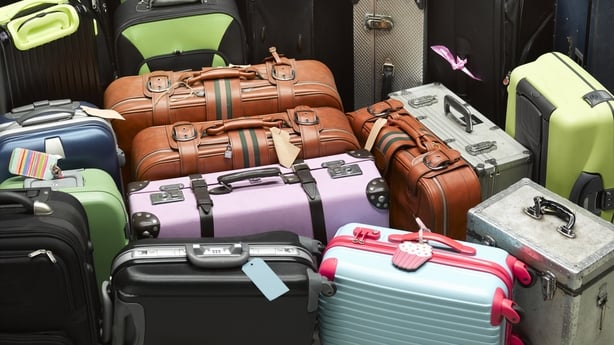
The relative insignificance of ancillary revenues continues into the early 2000s. For example, in Ryanair’s annual results for 2004, they make up less than 14% of total revenues. So slightly more than was the case in 1999, but not by much.
The turning point really is 2006 – which is also when we start to get the Ryanair that we’re very familiar with today. This is the year that they announce that they’re going to introduce baggage fees for all checked bags.
They came into place on the 16th of March of 2006, with a whopping €3.50 being added to the price per checked bag, per flight.
And that was the online price – it doubled to €7 if you turned up at the airport with an unbooked bag.
But Ryanair was clever about getting the customer on side with this change, because at the same time they upped their baggage weight limits, including for in-cabin bags, and said they would cut their fares by an average of 9%.
They claimed at the time that the move was revenue neutral – so it wasn’t so much about squeezing more money out of passengers, but it was about trying to make the check-in and baggage process that big more efficient, and that bit cheaper for them.
But you can see quite quickly how this change in approach starts to ramp up the importance of ancillary revenues.
In its 2007 results, they represented 19% of all revenue for the airline – and, within that category, ‘non-flight scheduled’ revenues – essentially the add-ons to the ticket price, like baggage – made up two thirds of the total figure.
And it grows from there…
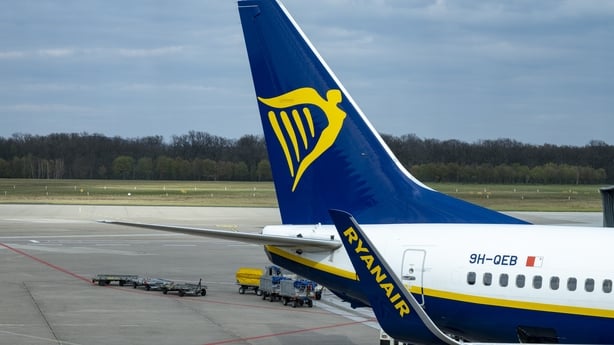
Yes, by 2014 ancillary revenues had grown to make up nearly 29% of Ryanair’s total revenue – by its latest annual results for its 2024 year, they represented 32% of total revenues.
Last year Ryanair took in more than €4.2 billion in revenue from these add-ons and extras.
Comparing 2024 to 1999, ticket revenues at Ryanair are around 35 times bigger – but ancillary revenues are more than 116 times bigger than they were in the same period.
And while we’re looking primarily at Ryanair, it’s a trend across the whole industry.
Vueling, which has the same owner as Aer Lingus and British Airways, says it has doubled its ancillary revenues between 2019 and 2023. Ancillary revenue made up about a quarter of total income at EasyJet last year too.
But Ryanair is really the master – and that’s partly because they have way more passengers than they did back then – so that’s more potential buyers of check-in baggage, or in-flight food, or car hire.
They’ve also utilised technology to get better at finding the right offer for the right customers – and they’ve gradually expanded the kinds of add-ons they offer.
That goes all the way from the booking process – and the way they offer you car hire, hotels, travel insurance, and so on. In terms of the flight itself you can now pay extra for specific seats, or for extra leg room, and then on the flight there’s a lot on offer in terms of goods and food and drink.Not to mention all of the other things they’ve tried to sell in flight over the years – like scratch cards, internet access, in flight entertainment, and in-flight phone calls.
But, crucially, that rise in ancillary revenues is heavily driven by the fact that they’ve gradually hiked up the likes of baggage fees.
You’re now spending anywhere between €19 and €60 for a checked in 20kg bag – compared to that €3.50 to €7 for a 30kg checked in bag back in 2006.
And they use that to shape consumer behaviour, don’t they?
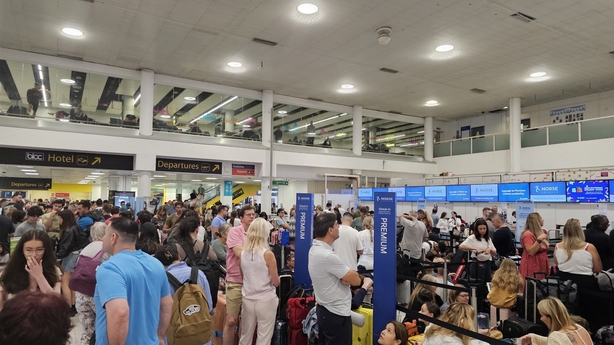
Definitely… part of Ryanair’s justification for introducing baggage fees in the first place in 2006 – and for having a higher price for those who checked one in at the airport – was to try to get more passengers to check in online, which was cheaper for the airline.
In 2008 they raised their baggage fees twice – and said they would keep doing that until half of their customers checked in online, and fewer passengers checked in a bag at all.
By 2013, Michael O’Leary said the proportion of passengers checking a bag into the hold had fallen from 80% to 19% – which he said was saving them a fortune in check in desk and baggage handling fees.
By that stage the charge for a checked in bag had risen to €20, but O’Leary said it would keep going up in order to discourage more passengers from checking in a bag.
He said the dream was that no-one would check in a bag – but realistically he hoped they might eventually get it down to 10% of passengers.
At the time he was also asked whether they would ever charge passengers for a carry-on bag, and he said it was likely at some point in the future, but he couldn’t get his head around how they would do it.
He figured it out, though…

Arguably Ryanair were too successful in discouraging people from checking in a bag, which meant that suddenly the revenue they were generating from the practice was at risk. So it was probably inevitable that they found a new way to drum up sales.
In 2018 they introduced a €5 charge for passengers bringing a bigger bag into the cabin. And this time they argue that it will be good for passengers because it will speed up the boarding process.
And just like when they introduced baggage fees to begin with, they try to sweeten the deal… the cabin bag rule is part of its priority boarding offer, they also cut the cost of a checked in bag, and raised the weight limit.
And initially at least passengers could still bring a cabin bag at no extra cost – but it would be checked in, meaning they’d have to wait at the carousel to collect it.
In a way, this seems counter to their previous attempts to push people away from checked in bags – but of course it doesn’t take long for them to change tact again.
Once people get used to the new system, they ditch the free, checked-in cabin bag – and the drop the baggage weight allowance, and raise the cost of checking in a bag once again.
But they’ve used these kinds of fees and charges to push consumers in other ways, too.
You might remember about 10 years ago when Ryanair tried to rehabilitate its image as a friendly airline – which it said was an effort to improve the customer experience. Part of that was the introduction of assigned seating, rather than the old free-for-all.
But if you wanted a particular seat, or you want to be sure you got to sit next to the person you were travelling with, being first in the queue was no longer enough – you were going to have to pay extra to secure it.
They’ve used their add-ons to grab headlines too, haven’t they…

Yes – the notorious one is the suggestion that O’Leary raises every now and again that they might start charging customers for using the toilets.
He’s been saying they’re considering doing it for years, and it pops up again every few years – but O’Leary also said in 2010 that the claim was only a PR stunt.
And of course when Ryanair has floated the idea they’ve argued it would be good for the passenger – because it would allow them to take one toilet out of the plane, and put more seats in, which would allow for lower fares.
Another regular kite that they fly is the idea of charging extra for the actual seat – and anyone who doesn’t will have to stand. There are obviously safety issues that crop up with that potential idea, though.

